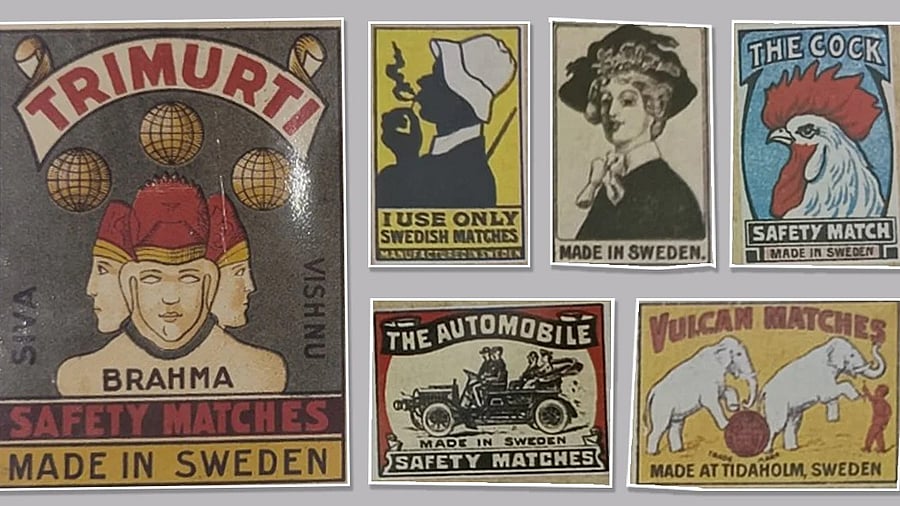
Credit: Special Arrangement
The quirky and colourful art found on matchboxes have long fascinated collectors. However, in recent years, matchboxes featuring cultural references and unique imagery are hard to come by, says Pradeep Kambathalli, an artist. This has prompted a growing number of collectors to turn their attention to vintage matchboxes.
Kambathalli has been collecting matchboxes since high school. His collection comprises over 2,000 articles. “The oldest matchbox I own is from the 1950s,” he shares. He can’t pinpoint the exact year it was made, as it was found inside a wooden box belonging to a friend’s grandfather. He uses vegetable-based varnish to weatherproof older boxes from the ’50s and ’60s.
Institutional archive
The Museum of Art and Photography (MAP) has a collection of 35,000 matchbox-related art pieces. These include wooden, plastic and cardboard boxes, labels, hand fans with label art, and other collectibles. They were donated by Gautam Hemmady, who was a noted stamp collector, says a source.
Many labels, bearing the brand name and the country of manufacture, are stored in multiple folders. Interestingly, labels featuring Indian images and motifs were made in countries like Sweden, Austria and Japan, before India had the manufacturing facilities.
A box labelled ‘Sankoontala’, showing two saree-clad women, bears the words ‘Made in Belgium’. Boxes with Telugu and Tamil script are also part of the collection.
Indian labels
Later, boxes were made abroad but their labels were printed in India, and the Swadeshi movement became a recurrent theme. Post-Independence, some were commissioned by the government. These carried images of heritage sites like Ajanta and Ellora caves or images that spread awareness about diseases like polio. Bollywood icons were also often depicted.
“Matchbox art gives us a peek into the prevailing issues and popular themes of the time they were made in,” says Kambathalli.
In India, most matches are made in Sivakasi, Tamil Nadu, collectors say. Kambathalli points out that in the past five to six years, creative and colourful labels have become hard to find in the city. “They are still easily available in small towns and villages,” he shares. Copyright issues and standardisation have left little room for creativity.
Noticing the decline in matchbox art and rising demand for vintage finds, visual artists Sonal Nagwani and Kevin Thomas launched Maachis Art in
December 2024. They are documenting old pieces and creating new designs to revive the art.
However, Kiran Munipalle, whose 30-year collection includes over 10,000 boxes, notes that while matchbox collecting has picked up, “80% of
collectors are doing it commercially”. “When I started collecting, I would
literally buy them off the streets,” recalls the 45-year-old who runs a wristwatch company. Now, vintage matchboxes targeting hobbyists are easily available on e-commerce sites, he shares.